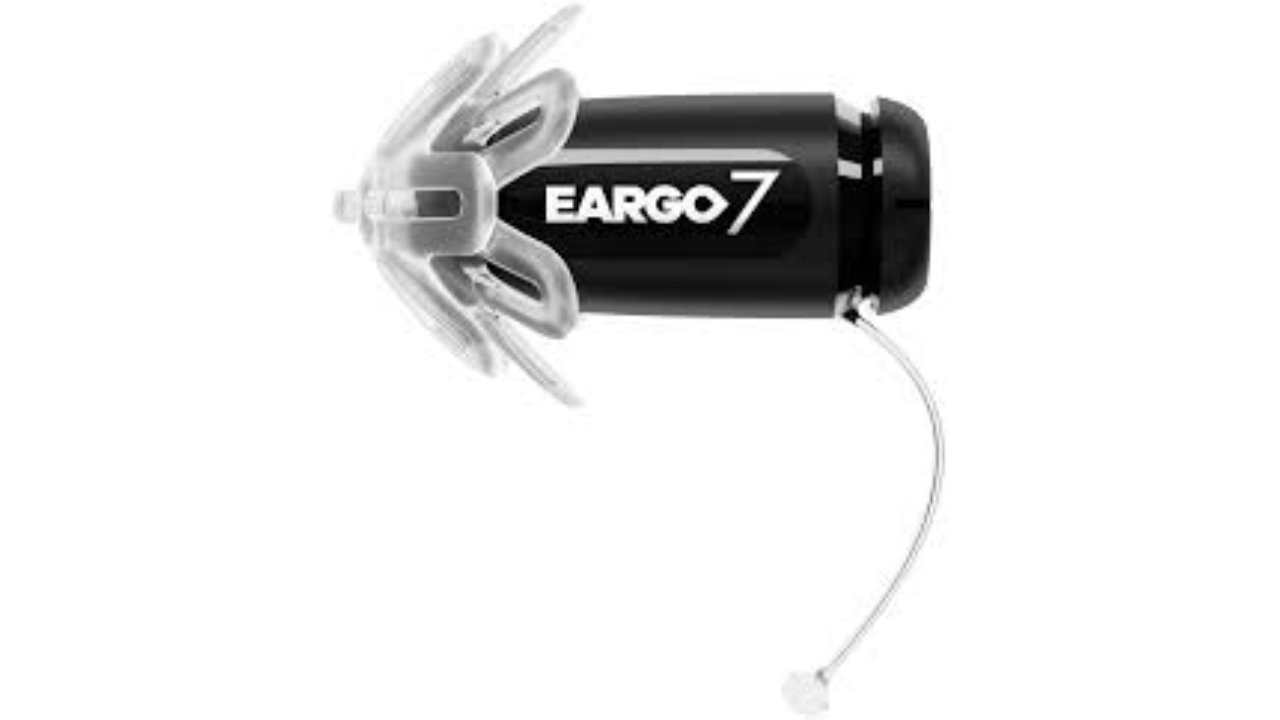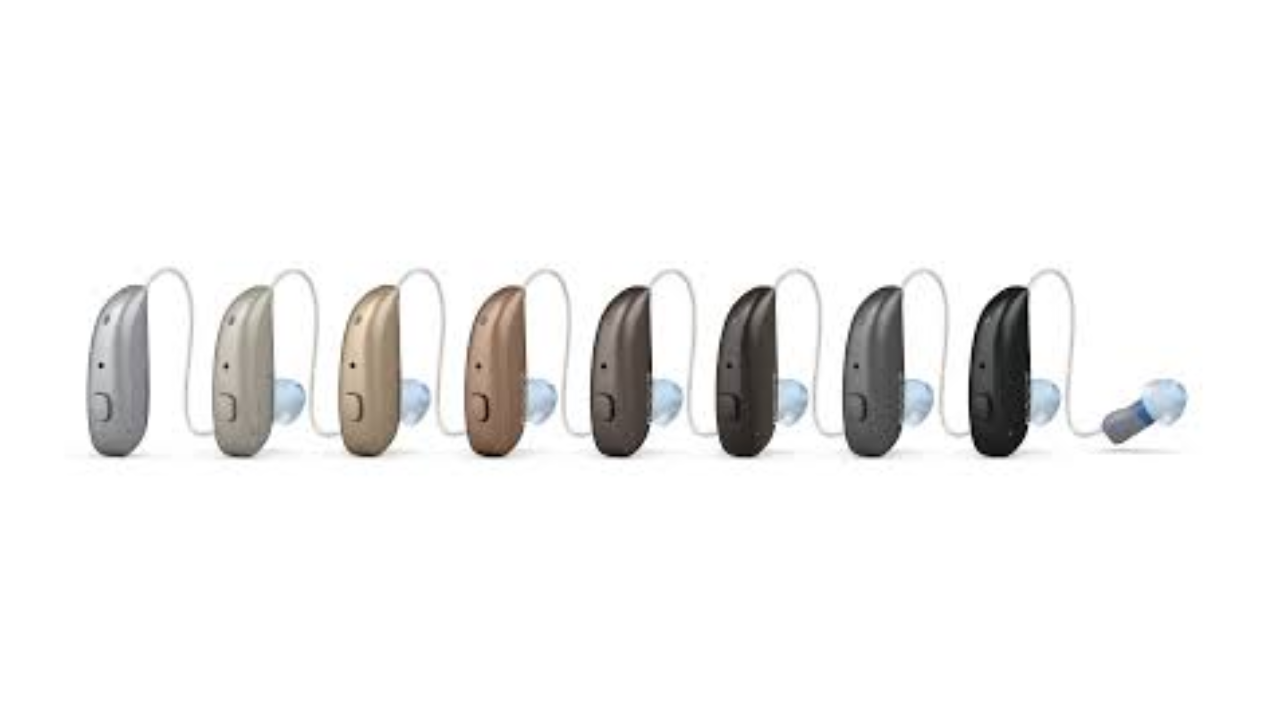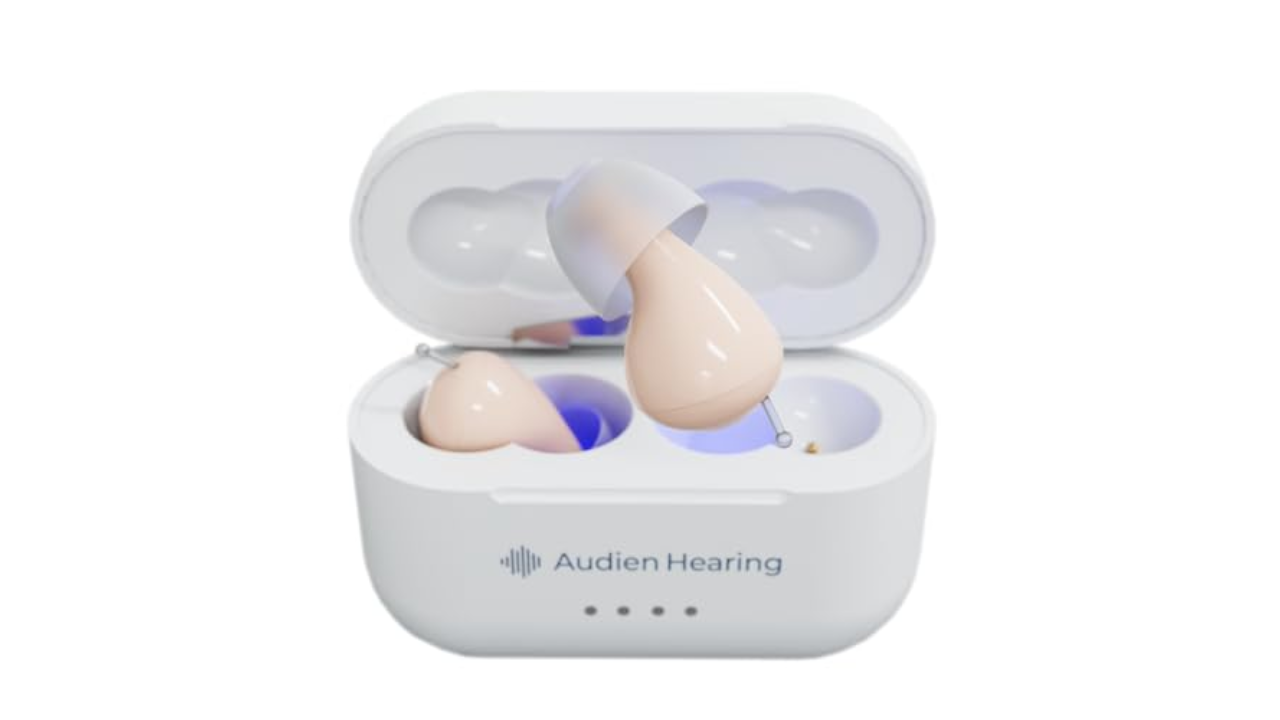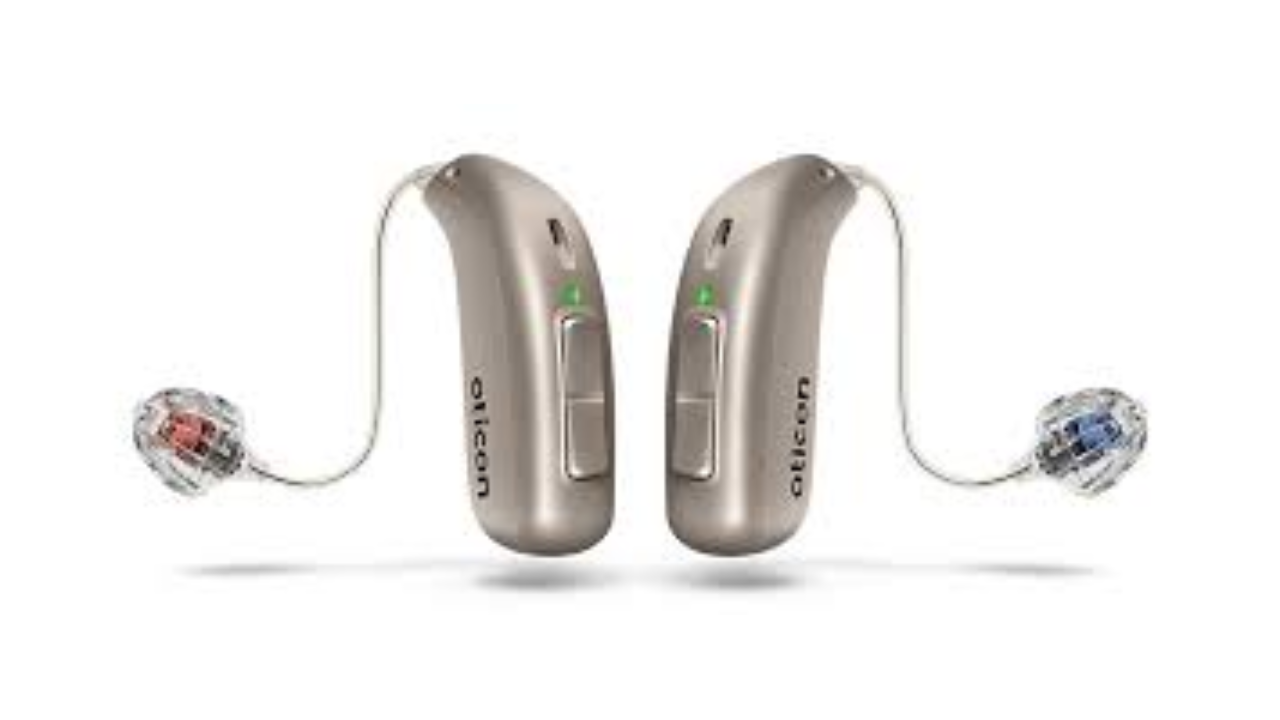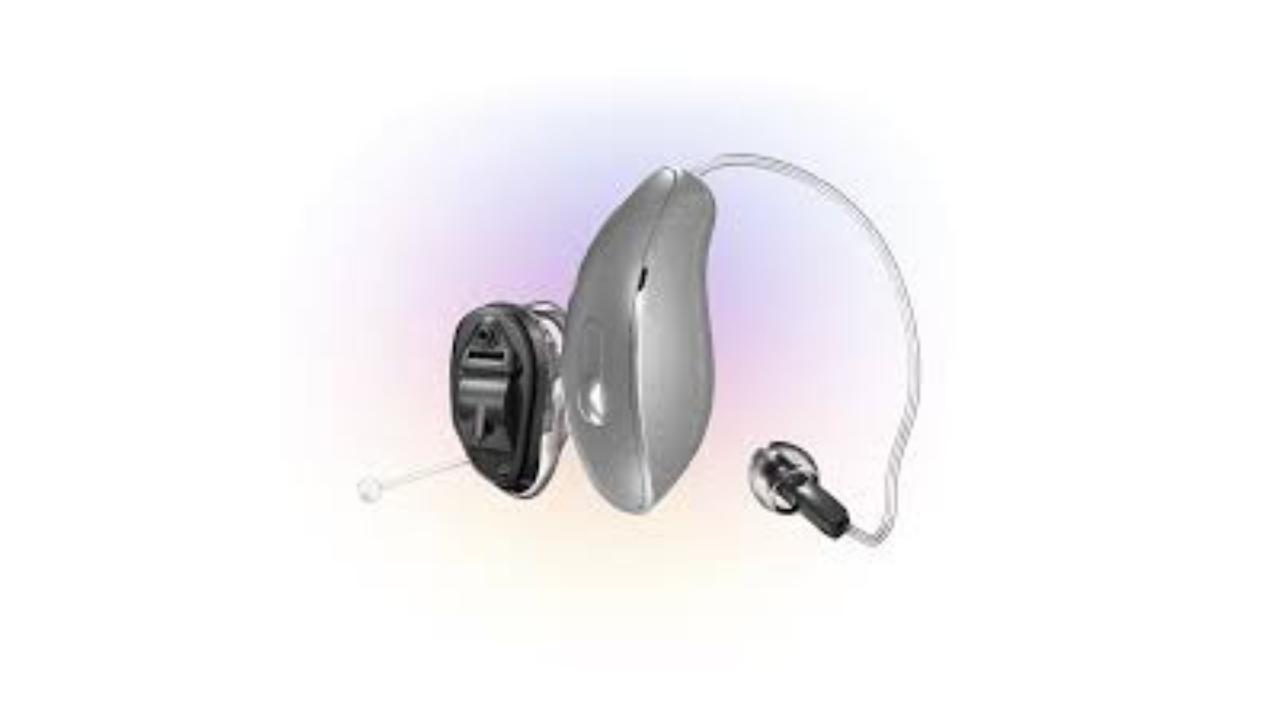Tinnitus is an auditory symptom that causes ringing or other abnormal noises in the ears in up to 26% of people worldwide. According to the National Institutes of Health (NIH), these “phantom sounds” can vary significantly between individuals and may present themselves as buzzing, clicking, humming, roaring, whistling, hissing or squealing. The sounds may come and go or vary in intensity and volume, but tinnitus that continues for more than three months is considered a chronic condition.
While environmental and genetic factors may play a role, tinnitus can also be a symptom of underlying hearing loss. When hearing loss and tinnitus coexist, it can be challenging to determine the best hearing aid option to improve sound recognition while minimizing your symptoms. Your hearing aids should have specific features and programming capabilities to address both problems.
To understand what to look for in the best hearing aids for tinnitus, we consulted a panel of experts and used their input to compile a list of the most important features to consider. We researched over-the-counter and prescription hearing aid options to identify those that can help manage tinnitus symptoms while improving your overall hearing quality. We also considered factors like ease of use, durability and cost. These are our top choices for best hearing aids for tinnitus in 2024.
Cost: $2,550 | Covered by insurance: Depends on the provider | FSA/HSA eligible: Yes | Visible/invisible/over the ear: Invisible (IIC) | Remote/app customization: Yes
The Eargo 7 is our top pick for the best OTC hearing aid for tinnitus because of its innovative design and discreet appearance. The hearing aid sits inside the ear canal, so it’s virtually invisible to others. Its self-fitting technology allows you to change settings easily through the Eargo companion app, and the device also comes with lifetime virtual support for additional adjustments or troubleshooting.
The app boasts multiple sound and volume settings, filtering options and hearing programs to cater to the needs of most users — including those with tinnitus. While there isn’t a physical volume control on the device itself, you can save up to three of your favorite sound profiles within the app, which can be adjusted by tapping the device to switch between them.
One of the reasons we chose this model is its Sound Adjust+ feature, which automatically adjusts your hearing aids based on your environment and listening preferences. This feature benefits those with tinnitus, as it can help mask the ringing or buzzing sound.
The downsides of the Eargo 7 are its higher price point compared to other over-the-counter brands and the lack of Bluetooth streaming capabilities.
- Invisible
- Self-fitting
- Lifetime virtual assistance
- More expensive than other OTC brands
- No Bluetooth streaming
Cost: Starting at $2,800 (per pair) | Covered by insurance: Depends on the provider | FSA/HSA eligible: Yes | Visible/invisible/over the ear: Receiver-in-canal (RIC | Remote/app customization: Yes
A prescription hearing aid may be the best option for those with severe tinnitus. Resound’s Nexia 9 model has advanced features and premium technology for those who prefer a more customizable device.
The hearing aid has an adaptive directional microphone that automatically adjusts to your environment to reduce background noise and enhance speech understanding. It also has advanced Bluetooth capabilities and can connect to many iPhone and Android devices for hands-free calls and streaming audio. Simply double-tap the hearing aids to answer calls, and the audio streams directly into your hearing aids.
The Resound Smart 3D app makes it easy to adjust settings and programs, and you can request assistance from a hearing professional directly through the app. The device is also rechargeable (the battery lasts up to 30 hours) and moisture resistant, making it a durable option for people who exercise, sweat or live in humid environments.
The main drawbacks to the Resound Nexia 9 are its high cost and the need for a compatible device for hands-free calls. Most newer smartphones should be compatible, but it’s best to double-check before making a purchase. It comes with a three-year warranty and one-time loss/damage coverage, but the cost may still be a barrier for some.
- Rechargeable
- Moisture resistant
- Advanced Bluetooth capabilities
- Need a compatible device for hands-free calls
- High cost
Cost: $289 | Covered by insurance: No | FSA/HSA eligible: Yes | Visible/invisible/over the ear: In the canal (ITC) | Remote/app customization: No
Audien Atom PRO 2 stands out as the best budget hearing aid for tinnitus because of its low cost and practical features. The in-the-canal design makes it relatively discreet and comfortable — the company made this model 28% smaller than previous Audien models to support the growing trend of discreet hearing aids.
The device has multiple volume settings you can adjust by removing the hearing aid from your ear and using a small tool to turn a dial. While this may be less convenient than adjusting settings through an app on your phone, it’s still relatively easy once you get the hang of it. Plus, the simple features cater to an extended battery life of up to 24 hours per charge. The included UV charging case holds additional power for when you’re not near an outlet.
The downsides of the Audien Atom PRO 2 are its lack of advanced customization and the need to adjust settings manually. However, people with mild tinnitus may find this budget-friendly option effective enough to alleviate discomfort. It also comes with a one-year manufacturer’s warranty for defects.
- Relatively discreet
- No smartphone or app needed
- Battery lasts up to 24 hours
- Lacks advanced customization
- Manual adjustments take longer
Cost: $4,000-6,000 | Covered by insurance: Depends on the provider | FSA/HSA eligible: Yes | Visible/invisible/over the ear: Receiver-in-canal (RIC) or behind-the-ear (BTE) | Remote/app customization: Yes
The Oticon Real hearing aids offer versatility and comfort for those with mild-to-moderate hearing loss and tinnitus. They come in a variety of styles and colors to match your preferences, including receiver-in-canal (RIC) or behind-the-ear (BTE) options. Both styles are available with disposable or rechargeable batteries, so you can truly tailor your hearing aids to be exactly what you need.
This model uses machine learning, called Deep Neural Network (DNN), to process sound and better understand your hearing needs. In turn, conversations are clearer and more natural. The device also has innovative technology that reduces wind and handling noise, like rustling clothes or hair, for a better listening experience.
While the technology is impressive, Oticon’s Tinnitus Sound Support program is the most significant selling point for tinnitus. The program offers a variety of sound therapy options to help you manage symptoms and find relief. You can adjust the settings through the Oticon ON app, which also lets you track your hearing aid usage and battery level. Keep in mind that a prescription from a licensed hearing provider is needed to purchase these hearing aids.
- Multiple styles and colors
- Included Tinnitus Sound Support program
- Rechargeable or disposable battery options
- High cost
- Must have prescription
Cost: Starting at $2,000 (per pair) | Covered by insurance: Depends on provider | FSA/HSA eligible: Yes | Visible/invisible/over the ear: Invisible-in-canal (IIC), completely-in-canal (CIC), in-the-canal (ITC), in-the-ear (ITC), receiver-in-canal (RIC) | Remote/app customization: Yes
Bluetooth is a must-have feature for many hearing aid users, as it allows you to connect to your phone, TV and other devices for hands-free and seamless audio streaming. The Starkey Genesis AI offers the best of both worlds for tinnitus, combining advanced Bluetooth and tinnitus technology into one device.
Its My Starkey app allows you to customize your hearing aid settings, track your physical and mental health, and even offers a Tinnitus Relief feature with sound therapy. The company states that the Genesis AI mimics the brain’s natural auditory process to speed up sound processing and reduce the strain on your brain, making manual adjustments less necessary because it automatically adjusts to your surroundings.
Other noteworthy features include fall detection, speech transcriptions, reminders and remote adjustments. Multiple colors, styles and battery options are available, but this model is more expensive than others. Check with your insurance company for coverage details to determine if your plan will cover a portion of the costs.
- Has app and onboard controls
- Up to 13 color choices for some models
- Faster sound quality than most
- High cost
- Must have a prescription
Cost: Starting at $3,000 | Covered by insurance: Depends on provider | FSA/HSA eligible: Yes | Visible/invisible/over the ear: Completely-in-canal (CIC) | Remote/app customization: No
The Phonak Lyric is invisible to others, and unlike other models, you can wear them 24/7 without daily removal or battery changes. After a hearing professional inserts Lyric into your ear canal, it remains there for several months until it’s time for a replacement. This means you can shower, sleep and exercise without worrying about removing and reinserting your hearing aids. They aren’t 100% waterproof, so swimming and extreme water sports are not recommended.
The Lyric’s microphone sits in the ear canal, making it less susceptible to wind noise. Phonak’s proprietary technology reduces background noise and enhances speech clarity. This model is sold on a subscription basis, meaning you subscribe to a one- or two-year plan to receive regular replacements throughout that time frame.
Lyric has also been shown to reduce tinnitus symptoms in some users. According to the company’s independent research and survey data, Lyric wearers reported faster symptom relief than daily-wear hearing aid devices. Like other high-end hearing aids, Lyric requires a prescription and is covered by some insurance plans.
- Invisible
- Can leave in ear canal 24/7
- Doesn’t require batteries
- Needs to be replaced every four months
- Not 100% waterproof
Cost: Starting at $3,000 | Covered by insurance: Depends on provider | FSA/HSA eligible: Yes | Visible/invisible/over the ear: Behind-the-ear (BTE), receiver-in-canal (RIC), in-the-ear (ITE) | Remote/app customization: Yes
The Widex Moment boasts an impressive battery life of up to 37 hours per charge. The standard charger is small enough to slip into a pocket or purse, and you’ll have fully charged hearing aids in just four hours. The LED light indicator lets you know when charging is complete.
The battery isn’t the only thing that lasts on the Widex Moment. Its advanced technology and machine learning capabilities enable some of the fastest sound processing on the market. The company states that 90% of wearers are satisfied with the sound quality and natural sound experience, thanks to the brand’s Puresound technology. This technology reduces the artificial sounds that are common during delayed sound processing.
For tinnitus specifically, the company offers Widex Zen Therapy, which uses fractional technology and customizable sound therapy to help manage ringing sensations. Your hearing care professional can help you adjust these settings based on your symptoms. Some models may require an extra accessory for remote adjustments and controls through the Widex app.
- Multiple models and color options
- Up to 37 hours of battery life
- Faster sound processing than most
- High cost
- Requires extra accessory for remote adjustments
What is tinnitus?
Tinnitus is the perception of ringing, buzzing, swishing or other sounds in the ears or head without any external source. It can be temporary or chronic and may vary in severity from person to person. Some people experience symptoms in only one ear, while others may hear the noise in both ears.
There are three main types of tinnitus:
-
Subjective: The most common type, where only the person experiencing it can hear the sound.
-
Objective: A rare form that a medical professional can detect during an examination with a stethoscope.
-
Pulsatile: A type of objective tinnitus in which a person hears a rhythmic or pulsing noise in sync with their heartbeat or blood flow.
Tinnitus can be a symptom of an underlying condition, such as hearing loss, ear injury or a circulatory system disorder. It can also be a side effect of certain medications or exposure to loud noises. In some cases, the cause of tinnitus may not be known.
Depending on the severity, tinnitus can be a minor annoyance or it can significantly affect your daily life. People with severe forms of the condition may have trouble concentrating, sleeping or communicating with others due to the persistent noise.
There is no cure for tinnitus, but experts recommend seeking treatment to help manage the symptoms and improve your day-to-day life.
How do hearing aids help tinnitus?
“Hearing aids help mask tinnitus ringing by generating white noise,” says Katie Koebel, an audiologist and senior manager of audiology at HearingLife Canada. This white noise is a similar frequency and intensity to the tinnitus ringing, making it less noticeable.
Hearing aids may also benefit tinnitus sufferers by:
-
Stimulating the auditory system that has been deprived of input due to hearing loss, decreasing the perception of tinnitus
-
Amplifying environmental sounds that might have been missed, which can help mask tinnitus
-
Reducing stress and listening fatigue, both of which have been shown to contribute to worsening tinnitus
-
Reducing social isolation and increasing engagement with loved ones, which may help distract from tinnitus symptoms
-
Utilizing sound therapy, a continuous or oscillating sound (white, pink or brown noise, etc.) that’s played through the hearing aids to help divert the brain’s attention away from tinnitus
“The most helpful thing a tinnitus sufferer can do is to get information and find a treatment path that meets their specific situation alongside their hearing health care professional,” says Koebel.
What to look for in a hearing aid for tinnitus
When shopping for a hearing aid specifically for hearing loss and tinnitus, Koebel says it’s essential to consider the following features and options.
-
Tinnitus-masking capability: Look for hearing aids with specific programs or settings for managing tinnitus symptoms. Companies like Oticon offer tinnitus programs with customizable sound options that help minimize unwanted sounds.
-
Sound therapy: Some hearing aids offer built-in sound therapy features similar to tinnitus-specific programs. This feature may provide relief by masking the tinnitus sound through white noise, pink noise, ocean sounds or other soothing options.
-
Bluetooth connectivity: Streaming sound directly from your phone to your hearing aids or adjusting volume and environmental settings through a smartphone app can be incredibly beneficial. Many hearing aid brands, including Widex and Phonak, offer this feature.
-
Automatic sound adjustments: Some hearing aids have technology that automatically adjusts to different environments, reducing the need for manual adjustment. This may be helpful for tinnitus sufferers who may experience varying levels of symptoms throughout the day.
-
Cost: Some hearing aid models may have more advanced features and a higher price point, so it’s essential to find a balance between your budget and the features that will provide you with the most relief. OTC options may be more cost-effective if you don’t have hearing aid coverage, but they may lack advanced technology. However, prescription hearing aids usually cost more, but they are custom-fit and programmed by a hearing care professional.
-
Insurance coverage: If you have health insurance, check with your insurance provider to see if it covers hearing aids or a professional hearing evaluation. Many hearing aid companies accept health savings accounts (HSA) and flexible spending accounts (FSA), which can help offset costs.
Frequently asked questions
Does Medicare cover hearing aids?
No, Medicare does not cover the cost of hearing aids or related services. However, some Medicare Advantage plans may offer coverage for hearing aids. It’s best to check with your specific plan and provider for more information.
What causes tinnitus?
There are several potential causes of tinnitus, including exposure to loud noises, age-related hearing loss, earwax blockage and certain medications. In many cases, the cause is unknown. If you’re experiencing symptoms of tinnitus, it’s important to see a doctor or hearing care professional for a comprehensive evaluation to determine if there’s an underlying condition causing your tinnitus.
Is there a cure for tinnitus?
Currently, there is no known cure for tinnitus. However, several treatments are available. Hearing aids with specialized features for tinnitus relief, sound therapy and counseling may help.
What’s the best way to stop ringing in your ears?
Sound therapy may help reduce the ringing in your ears. However, it’s important to undergo a thorough assessment and treatment plan from a hearing care professional, as tinnitus can have different causes and triggers.
How can an audiologist help with tinnitus?
An audiologist is a hearing care professional who specializes in identifying and treating hearing issues, including tinnitus. Audiologists can perform a comprehensive evaluation to determine the cause of your tinnitus and provide personalized treatment options based on your results. Your provider may recommend hearing aids, cognitive behavioral therapy or sound therapy to help manage your symptoms.
Meet our expert panel
Katie Koebel, audiologist and senior manager of audiology at HearingLife Canada
Source Agencies

